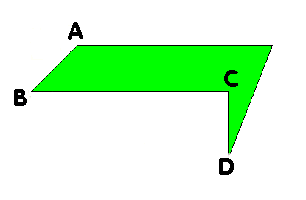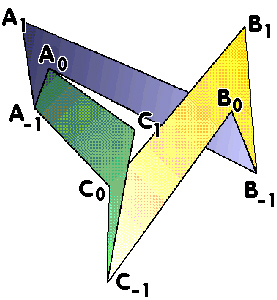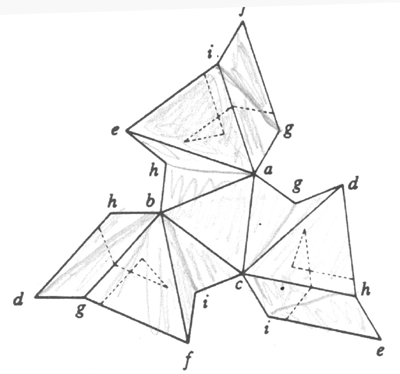
The first immersion of the real projective plane into R3 was produced by Boy, a student of Hilbert, at the end of the last century. A remarkable model with flat faces has recently been discovered by U Brehm.
First one makes three "horses heads".

The crucial feature of these is that the lengths of the parts AB and CD are to be the same. These three horses heads are glued together so that the part AB of one is attached to CD of another.The result is a Möbius Band, as shown below.
 |
Now to form the projective plane, seven more triangles have to be added. Four of
them, B1 B-1 A-1, C1 C-1 B-1 are added on the outside and cause no problems, but it is a good idea to cut a hole in the middle of the first triangle so that you can see inside. The three interior
triangles A1B0 C-1,
intersect each other and the three horses, so to make the model you have to cut holes in the triangles. Detailed instructions for making this model are in Brehm's article. |
Reference: Brehm, Ulrich: How to Build Minimal Polyhedral Models of the Boy Surface, The Mathematical Intelligencer Vol. 12, 51-55 (1990)
© Mathematics and Knots/Edition Limitee 1996 - 2002
